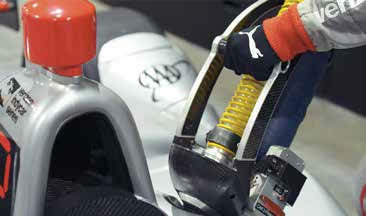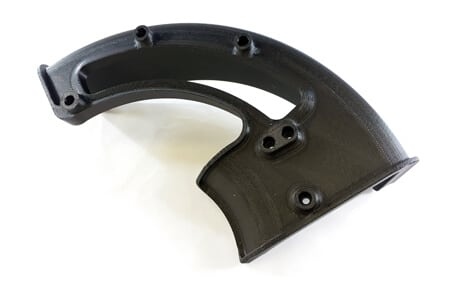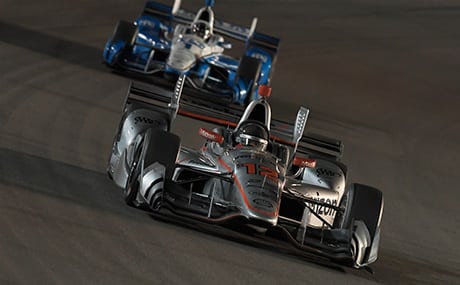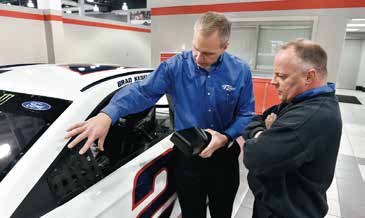Team Penske is synonymous with winning in automotive racing. Their legacy has been forged by the leadership of founder Roger Penske, and a team of individuals and partners that are dedicated to producing champions. Many of race wins, pole positions, and scores of national championships accentuate their commitment to excellence. However, for Team Penske, achieving this kind of performance means constantly asking how things can be done better, and technology is a cornerstone of that case.
“Typically, all of our competitors end up with the same solution at some point in time. But we need to be on the next solution, and Stratasys helps us get to the next solution quicker.” Tim Cindric, Team Penske.

At the Forefront of technology
“Technology plays a big role in racing today.” Tim Cindric, president of Team Penske stated. He also explains how technology isn’t invented at the racetrack, it’s demonstrated there. One technology that Team Penske has fully taken on is 3D printing. Using Stratasys 3D printing solutions, Team Penske has the ability to turn ideas into racetrack reality much more quickly than previously possible.
Highlighting its impact in race strategy preparation, Condric additionally said “It gives us more ideas of what’s possible.” Which makes all perfect sense, since for Team Penske, additive manufacturing solutions cover a lot of ground.
“When we first started using 3D printing in the early 2000s, we were mainly using it to support our wind tunnel model program,” said Matt Gimbel, Team Penske production manager. “Since then, it’s evolved into many different things. It’s evolved into jigs and fixtures, washout tooling in our composites department and race car components.”
Time pervades each aspect of Team Penske’s world, from IndyCar lap times to how long it takes an engineer’s idea to come to life. 3D printing gives users the ability to rapidly vet those ideas through print-and-adjust design approach. “We’re trying to…update these cars as fast as possible,” said Andrew Miller, Team Penske composites engineer. “Being able to 3D print components, we can quickly run through multiple iterations and it saves a lot of time.”


Additionally, Gimbel explained, “If we can’t get things done as quickly as we need to, then we’re losing to another team that can get their improvements to the race track faster. 3D printing allows us to take those ideas and turn them into actual parts, parts that maybe couldn’t even be made by any other manufacturing methods, and get them to the race track.”
Along with speed, FDM® and PolyJet™ additive solutions supplies both accuracy and reliability which is required. “When we’re producing components, we’re very confident in the design and the capability that these designs are providing, which enable us to get to the track a lot faster,” said Miller.
Distinguishing the best value of additive manufacturing for Team Penske can be found difficult, given its wide range of use. However if you ask Gimbel, the best value is being able to use parts directly from the printer for their race cars. According to Gimbel, an example of this would be the development of a carbon monoxide filter which feeds fresh air to the driver. “The new design was originally intended to be made in carbon fiber, but once we printed the parts and did our testing, we realized that…not only is this a great design, but the material that the part was made in was actually good enough to be raced in the race car.”
Although additive manufacturing has been around for decades, for Team Penske, Gimbel believes they’re just at the beginning of their journey with 3D printing. “The future for 3D printing in the racing industry has a long runway and it’s really wide open. I don’t think anyone really knows what the full potential of 3D printing is,” said Gimbel. Cindric summed the experience this way: “Typically, all of our competitors end up with the same solution at some point in time. But we need to be on to the next solution, and Stratasys helps us get to the next solution quicker.”
